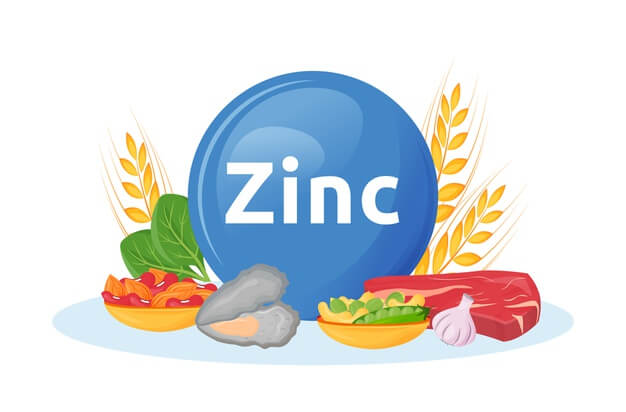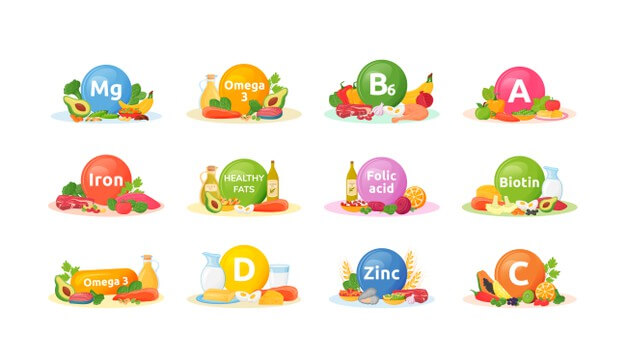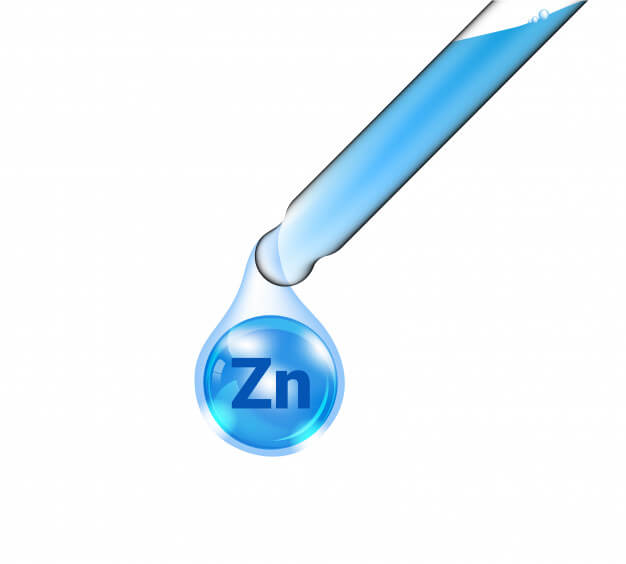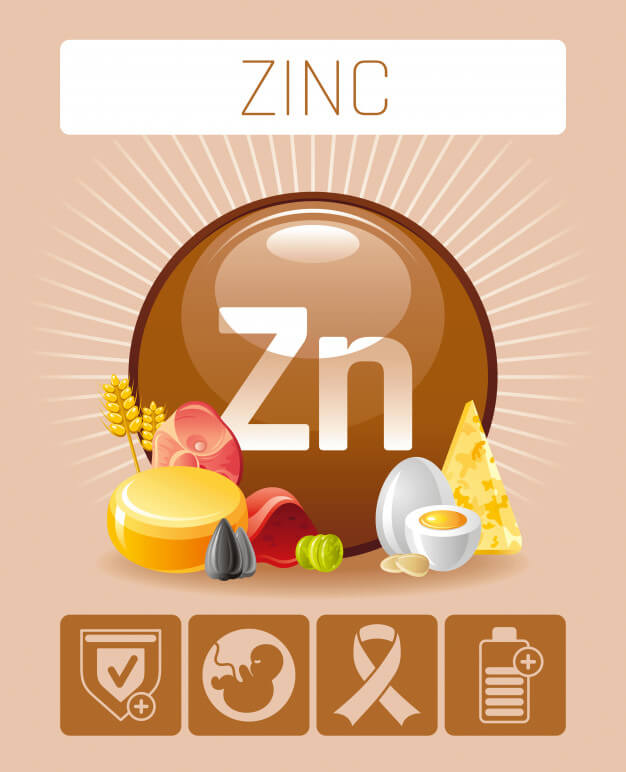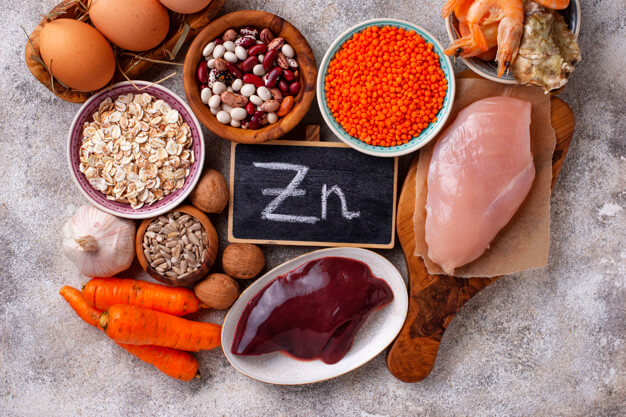Zinc Metagenics – What You Need To Know About Zinc Deficiencies
Zinc Metagenics, better known as Zinc A.G.™, features zinc as an all-natural amino acid chelate designed to be absorbed in your stomach and intestines. Zinc is important in maintaining immune system health and tissue integrity. Zinc is involved in many metabolic processes and is an essential mineral for the maintenance of a healthy immune system. Zinc is critical for the maintenance of a healthy immune system and red blood cell production, and it is also necessary for sperm production and reproduction. Zinc also plays a key role in creating collagen, a major component of skin, tendons, joints, ligaments, and bone.
Because of its importance in maintaining a healthy immune system, this amino acid has been found to have an anti-inflammatory effect, antiseptic properties, and is required for the healing and maintenance of the immune system. It is one of the essential minerals that must be consumed daily to maintain a healthy immune system and overall health and vitality.
Zinc provides the body with oxygen and nutrients to build its cellular structure. It is considered being one of the essential minerals that must be consumed daily to maintain a healthy immune system. They involved it in most of the detoxifying processes and it is important for maintaining the health of the body and its immune system. Therefore, its consumption is essential to total body detoxification and maintenance.
The Effects of Nutrient Interactions on Health
Nutrients are compounds that are required to live. They form the base of all living organisms and each nutrient has a specific position within the body to serve a specific function. For example, carbohydrates provide the energy that is used for respiration, while proteins provide the building blocks of muscle tissue. As nutrients are taken in and used by cells, they interact with one another in a series of chemical processes known as essential nutrient interactions.
Interactions control many of the most important biochemical reactions in the body between nutrients. Examples of these nutrient interactions include the absorption of nutrients in the intestines, the distribution of nutrients to tissues, and the use of certain nutrients to promote the growth of other nutrients.
We can group nutrients into two broad categories according to their interactions: essential and non-essential nutrients. We must derive essential nutrients from the foods we eat, while non-essential nutrients are found in plant material and certain naturally occurring elements. Based on where they are found, we can also classify nutrients as fat-soluble or lipophilic (fat-soluble), and insoluble (liposomatic).
The body uses most nutrients as nutrients, which are stored in the cells ready to be used as energy. However, some nutrients are not stored in the cells and instead, are used as by-products of cell function. Examples of these nutrients are amino acids, fatty acids, neurotransmitters, hormones, enzymes, steroids, vitamins, and minerals.
Although many nutrients are stored in the cell’s structure and some cells as parts of the chemical makeup of the cell, many nutrients pass through the cell walls and are released into the extracellular matrix where they can interact with other molecules for essential release of nutrients. One example of a nutrient involved in this process is glucose, which is released into the extracellular matrix as an energy supplement during exercise.
Using Cells for Energy Production
Some nutrients have their effects on nutrients and on the cells that use them for energy production; however, interactions between nutrients occur fairly frequently when two nutrients interact chemically and physiologically. These interactions can be powerful because one nutrient can change the concentrations of other nutrients in the body from their non-reactive or inactive states to react with and control the activities of other nutrients complexly. Examples of such nutrients are glycoside phosphates, fats, carbohydrates, and hormones.
Glucose is a sugar that is used in many cells for energy production. It is a simple sugar, which comprises two glucose molecules linked via Glycosylation. When a sugar molecule is glycosylated, it will become small enough to be absorbed into a cell.
However, this sugar can also become a sugar using a unique method; when a glucose molecule is made smaller, another glucose molecule may become attached to it and attach to the end of the glycosylation, creating a sugar chain. This sugar chain can be used by the cell as a source of energy, but the process of dehydration can also break it down into simple sugars.
Sugars can become enriched through interaction with other cells. When a cell is exposed to an excess of any one nutrient, some of the other cells will react and become enriched. Enriched sugars will have more glucose to be divided into energy by the process of glycosylation. This process will continue until the cells are enriched and no longer respond to the initial stimulus that caused them to become enriched, at which point they can respond to nutrients themselves.
These interactions between nutrients can also affect how long different cells live. Some studies have shown that certain nutrients can have a positive effect on the lifespan of various cell types. Although it is unclear how the interaction occurs or why it occurs, they have shown that nutrients can affect the lifespan and health of cells. These relationships may explain why some people live longer than others because of the better health of the cells that they are living in.
Although there are many ways that enriching nutrients can affect your health, they all have one thing in common: they are interactions between nutrients that can increase your health. To benefit from the positive effects of any one nutrient, you need to have the diet in place.
Nutrient interactions are necessary to ensure that your diet provides you with all the nutrients that you need to stay healthy. Take the time to research your diet and your daily lifestyle and see what combinations can improve your life.
What is the Difference Between Zinc and Chelated Zinc?
There are many different types of nutritional supplements on the market today. Some are better than others. You can find a lot of information on the internet on nutritional supplements, but what is the difference between zinc and chelated zinc? What makes one better than the other supplement? Here is an easy-to-understand comparison.
Let us start with the most common form of dietary zinc that you find in nutritional supplements. Zinc is present in many foods. Beef, pork, seafood, poultry, dairy products, nuts, and seeds are just a few examples. When considering what is the difference between zinc and chelated zinc, you need to compare the concentration of zinc in the supplement to the concentration in these foods.
Now there are several differences in the absorption rate of the zinc when compared to the absorption rate of the chelated form. The first and easiest way to compare the two is to look at the absorption rate. Simply take a look at the amount of zinc that would be required to provide adequate amounts of the nutrients in a daily dosage.
For example, an egg has about twenty milligrams of zinc, which is the same as what is the difference between zinc and chelated zinc. It is easy to see that taking a multi-vitamin containing zinc will supply more zinc than taking a supplement that contains it alone.
Having a Comparison of Overall Zinc Content
Another thing to keep in mind is that this is only a comparison of the overall content of zinc in the product. To get the accurate comparison, you should also consider the differences in other ingredients like fiber, protein, iron, and copper. These are important factors but can make a significant difference in the absorption rate and overall bioavailability of the zinc.
Because there are a few suppliers out there selling a product with zinc and chelated zinc, it is possible to have problems determining the true levels of zinc in the products that they are selling. A simple solution is to find a zinc and chelated zinc comparison chart that lists not only the percentage of zinc that are present in the product but also the other ingredients that it contains.
You can easily spot the difference between the two substances by looking at the absorption rate for zinc. If you compare the absorption rates for the two substances, you will quickly see how much zinc we need to achieve the daily requirements of an average person. This can easily be determined by reading a zinc and related diet comparison chart, which lists the recommended daily intakes for different nutrition groups. Besides providing enough zinc for an average person, it is important to consider the number of other nutrients that the product will provide if you are following a related supplement regimen.
By comparing zinc and chelated minerals, you can see which ones are more beneficial for your body and which ones are less effective. Zinc and chelated minerals may seem like similar elements, but the differences between them are quite clear.
Knowing the difference between these two substances will allow you to understand which is right for you. With supplements, knowing what is the difference between zinc and chelated zinc is the best way to ensure that you are always getting what you need and nothing less.
FAQs About Zinc Metagenics
Can I Take Vitamin C and Zinc Together?
It’s important to remember that just because two vitamins seem to work well together, that doesn’t mean they will be the best choice for you. There are several side effects to taking vitamins and if you don’t know what they are, you could end up damaging your body.
They commonly referred zinc and Vitamin C side effects to as “leaky stomach” symptoms. These can include constant feeling, stomach cramps, irritability, and vomiting. The reason that zinc and vitamin C don’t always cancel each other out is that while they help form a protective layer in your blood, your stomach isn’t able to absorb the vitamins yet.
To prevent this problem, it’s best to take both vitamins at the same time. You should also eat foods high in zinc so your body has the right amount to help your stomach absorb the vitamins as well. You should also watch for the foods that will have a negative interaction with these two vitamins, as these can harm your body.
For example, caffeine and aspirin interact badly with zinc and vitamin C, so you should avoid them if possible. Magnesium and calcium are also two other vitamins that often interact poorly with each other, so if you want to get rid of side effects, try to find a delicate balance between the vitamins. This way, you will get the protection you need without having to suffer from any nasty consequences.
What Interferes With Zinc Absorption?
Assuming the intestinal tract absorbs that zinc in sufficient amounts, the absorption of zinc by the GI tract is relatively low. For most people, zinc absorption is about 15% of the dose absorbed. This is just about the same per gram as the absorption of carbohydrates. Some people may receive higher absorption, but it is likely to be low. The absorption of zinc through the GI tract is low because the lymphatic system and other organs absorb zinc in the body.
In summary, the total absorption of zinc by the body is about 7.5% of the food. There is a slight variation in this. This ranges from about 1% of the food through the liver to about 8%. There is also some variability in the GI tract absorbs how much of the food. Some people have higher or lower absorption than others.
If the intake of zinc is high enough, only a quarter to a third of the food will be absorbed through the GI tract. Absorption of less than a quarter to a third of the food will be absorbed through the GI tract.
Building up immunity: Dr. John La Puma offers up key tips on how to build up immunity to the coronavirus – Santa Barbara News-Press
Source: (newspress.com)
Boost your immunity and thrive with these simple, effective tips
Source: (northcoastcourier.co.za)
Other Ingredients: Microcrystalline cellulose, croscarmellose sodium, stearic acid (vegetable), silica, and magnesium stearate (vegetable).
Directions: Take one tablet one to two times daily or as directed by your healthcare practitioner.
This product is non-GMO, gluten-free, and vegetarian.
Caution: Keep out of the reach of children.
Storage: Keep tightly closed in a cool, dry place.
[wps_products product_id=”4626889408547″ html_template=”product.php”]

